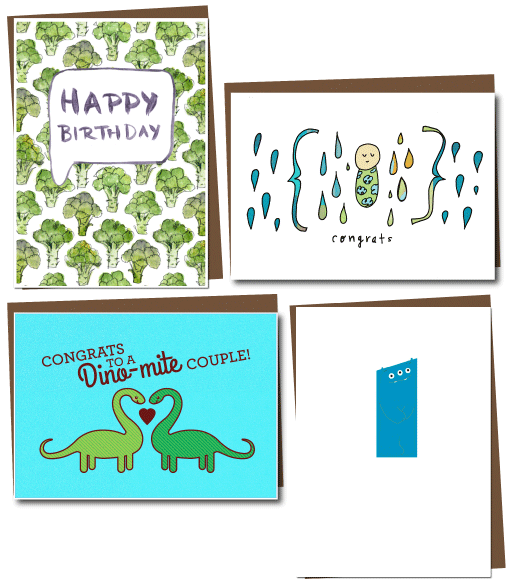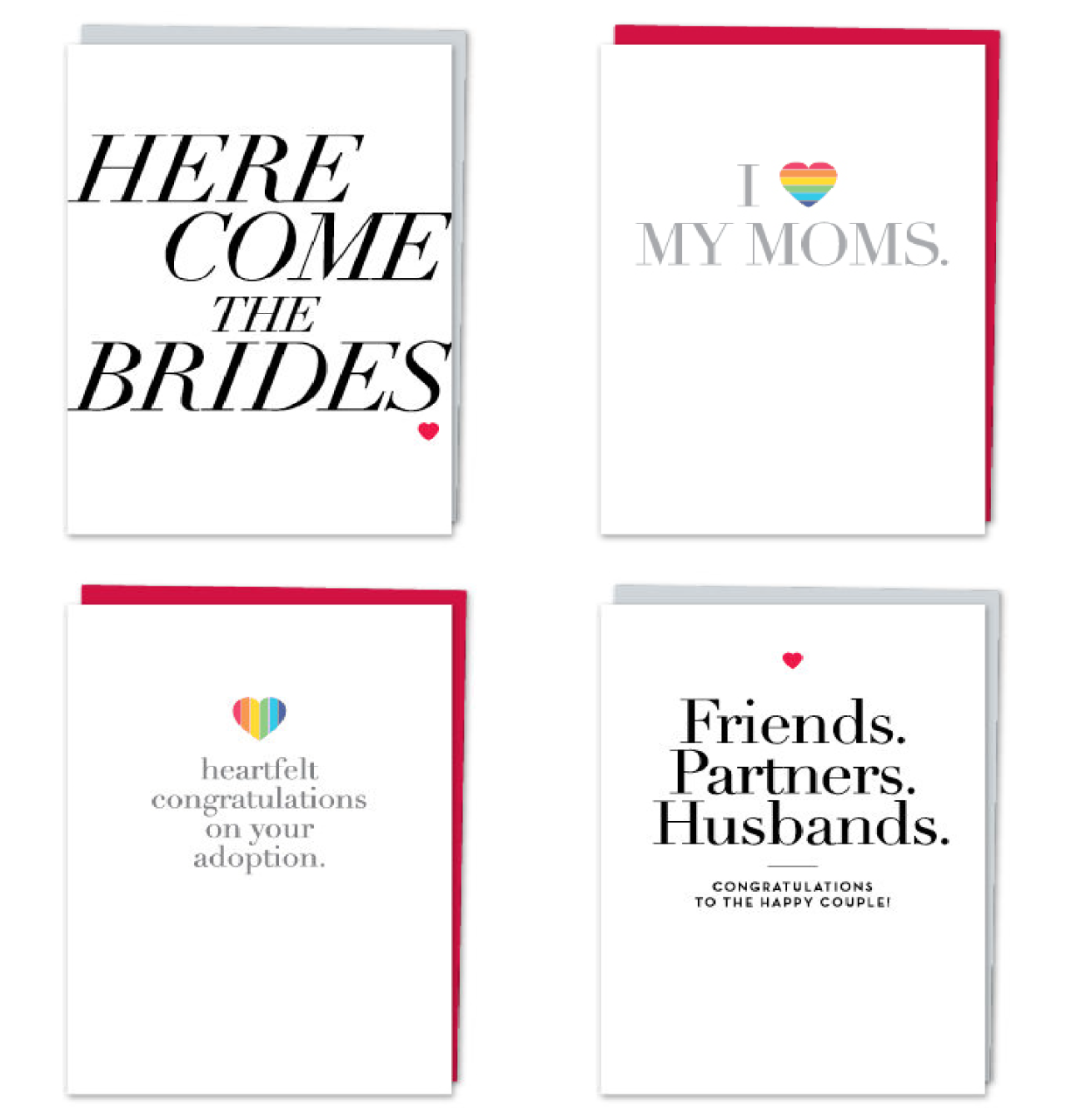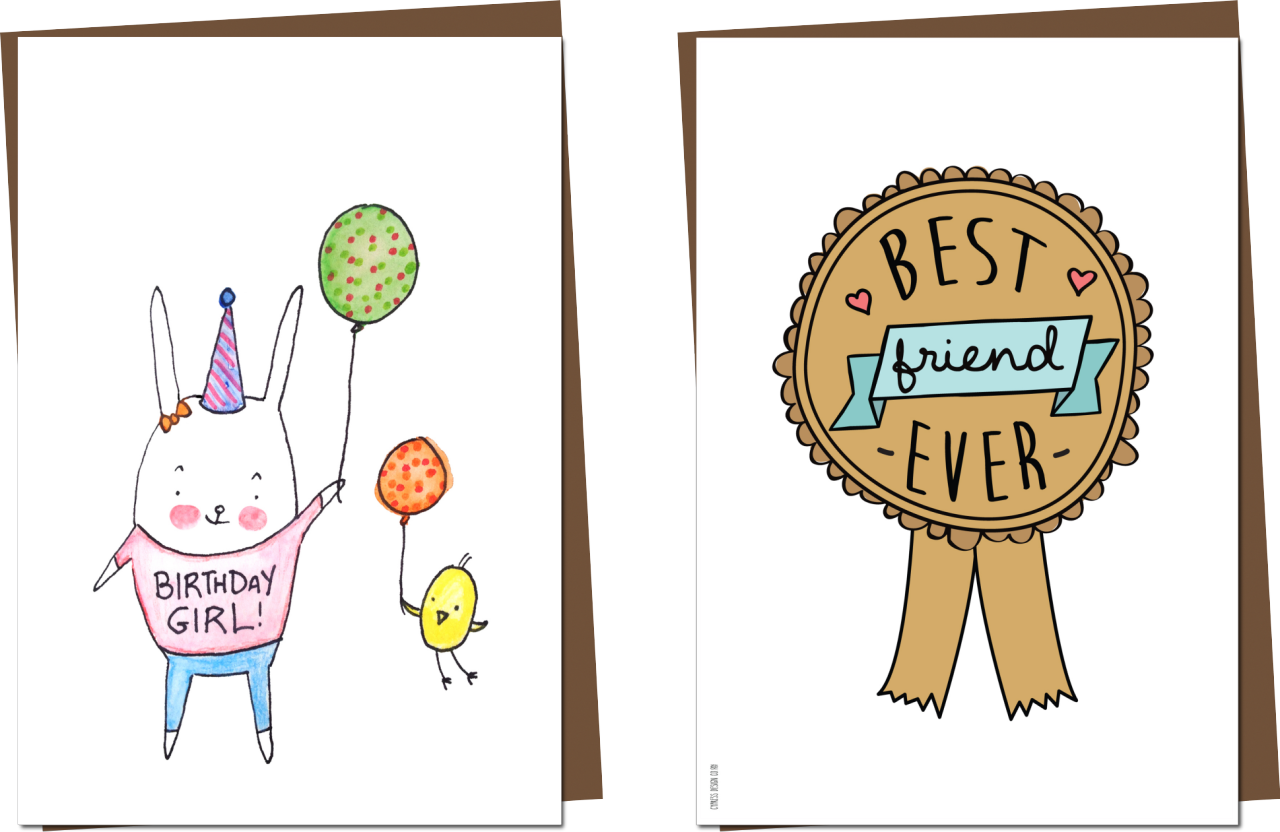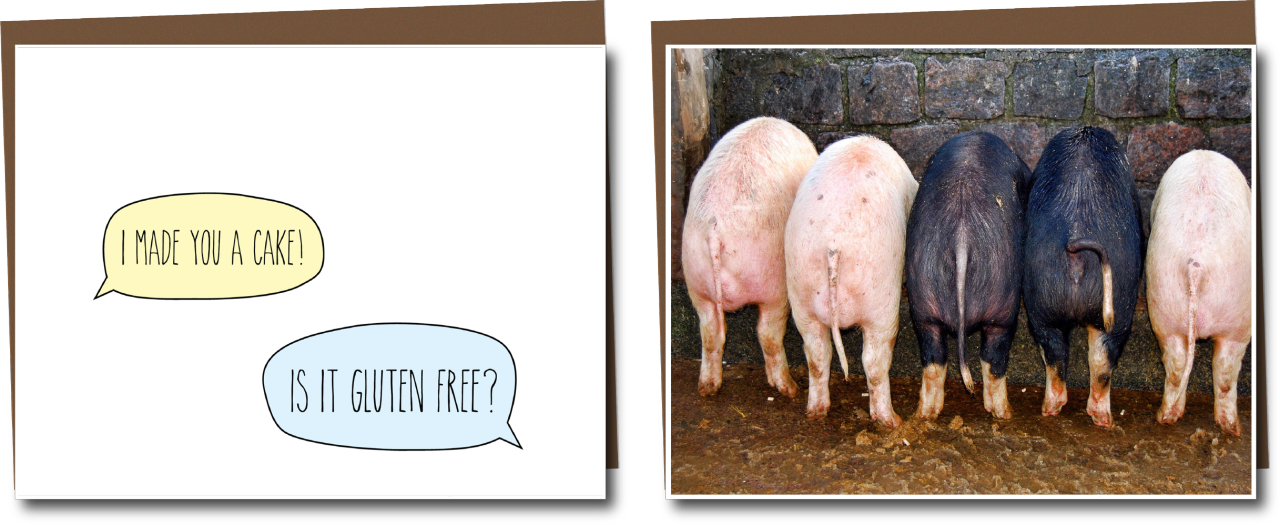10 Steps to Designing a Top-selling Greeting Card
What can you do to get noticed as a greeting card designer? Well, we have a few tips to offer on what successful greeting card designs got right.
Tips to Step Up Your Design Game
1. Create designs for in-demand categories.
Cards for some occasions like Birthday, Sympathy, Thank You, Wedding, Get Well, New Baby, and Congratulations are always in demand!

Designs by (clockwise from top left): Vicky Webb, Nightly Doodles, Tiny Bee Cards, and The Monstore.
Heading into the fall, a lot of holidays come fast and furious. Take note and prepare designs at least a month and half early. On your radar now should be the following holidays (listed with suggested submission deadlines):
- Halloween - Sept. 18th
- Veterans Day - Oct. 2nd
- Thanksgiving - Oct. 9th
- Hanukah - Oct. 23rd
- Christmas - Nov. 6th
- New Years - Nov. 26th
- Heck, while you’re at it…Valentine’s Day - Jan. 1st
2. Make your design specific to a recipient.
This may seem counterintuitive since the more people a design appeals to, the more potential clients there are, but what really cinches a buy with greeting cards is when they say the perfect thing.
Keep these popular groups in mind :
- Babies and children
- Teens
- Boys of all ages
- Men of all ages
- LGBT
- New moms
3. Give everybody some love.
Along the same lines as #2, think inclusively when making designs especially for Wedding, Engagement, New Baby, and I Love You cards. When celebrating love, it’s a special and important thing not to have to settle for cards with generic messages.

Designs by Design With Heart.
4. Establish a strong theme for your card.
Anytime cards are great, but most customers have a specific occasion in mind when they are shopping for a greeting card. Meet them where they are at with cards that have an identifiable theme or message. Text is a powerful tool for accomplishing this!

Designs by (left to right): Lady Lucas and Cypress Design Co.
5. Remember your product type.
There are many wonderful artists out there who struggle to break into the greeting card market because a greeting card is more than a pretty picture. Think about the greeting card as a medium and consider what images and messages it will most effectively showcase. Here are a few pointers:
- You can use the whole card. If you tend to error on the less is more side of things try adding a few more details.
- Play with text. Think of text like an image: manipulate it, style it, fill the page or use it sparingly. Whatever you do make sure your text is not an afterthought.

Designs by (left to right): Goldfield Arts and Violet Press and Paper
6. Do be funny.
Humor is a huge draw to customers. Funny cards best all other sentiments in sales and, research shows, they make the world a happier place.

Designs by (left to right): Cypress Design Co. and Demondium
7. Think local.
Cards that feature images of local landmarks, local sayings, local sport and school colors, and local or state pride are a huge hit. They are relatable and recognizable. Take advantage of your local knowledge and create a few designs your community would appreciate.

Queen Charlotte for Charlotte, NC; Virginia Greetings; and Texas Pride. Designs by (left to right): Joyce Wynes, Running River Designs, and Laura Maxwell.
8. Rep yo’self.
If given the opportunity, share a little bit about yourself with the customer. Create a short personable bio, a profile picture, and logo and be creative in how you incorporate them into your website and merchandising.
9. Keep the faith.
Design is a process. Hang in there and when you get stuck on a design, take a step back. A simple trip to focus your revisions is to ask yourself if your design is boring (then add more) or too complicated (then take some things away).
10. Be yourself.
You’ll probably make your strongest work when you’re authentic to the style and sentiment that come naturally to you. Customers are attracted to genuine emotion and humor. It is a good thing to know yourself, know your strengths, and work that knowledge to the best of your creative ability!
